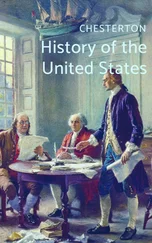This ‘form following function’ ethos of modernist architecture was particularly salient, since the Pioneer Health Centre was constructed to house a large-scale experiment on the effect of the environment on health, a concentration on preventative rather than curative medicine. The pioneers were a husband and wife team, Dr George Scott Williamson and Dr Innes Pearse, and the new Health Centre was the result of five years’ fund-raising activity by the couple to move their work from a small house nearby to this beacon to their conviction that, like illness, health could also be contagious. Once a patient presented at a doctor’s surgery or hospital ward, Dr Pearce believed that he or she would be in ‘the advanced stages of incapacitating disorder’ — that is, they felt ill. She had been appalled when working in a welfare clinic in Stepney in London’s East End to realise that she had never seen a healthy baby. The only time mothers came to the clinic was in an emergency, and all she could do was to treat the ailing infant. There was no time to enquire into the circumstances of the exhausted-looking mother, and of course she never saw the father.
What was needed were not just health facilities that acted as a ‘sieve for the detection of disease’, but conditions in which people could ‘keep fit and ward off sickness before they were smitten’; these would be provided by a place where the practice of health was distinct from the conventional practice of medicine. Only families, which the Peckham pioneers had decided were the ‘units for living’, were allowed to join, each paying a shilling a week (the Centre was intended to be self-supporting), and every member had to submit to periodic ‘health overhauls’ designed to check their capacity for individual, family and social life. For an additional few pence they could use a wide range of recreational facilities including a gymnasium, badminton court, roller-skating rink, swimming pool, billiards tables, a theatre space, and rooms for sewing parties or gramophone recitals. There were facilities for children (who had to be restrained from using the glass ashtrays for games of curling along the long corridors) and a nursery club for the under-fives, with specially designed equipment (and much note-taking by the staff) intended to improve family life and enhance personal development. While the Pioneer Health Centre was distinctly modern, experimental and forward-looking in its concept, organisation and habitat, it simultaneously looked back to a pre-industrial community in which a doctor knew his patients in health as in sickness, and the circumstances of their lives, a country village (though without the feudal superstructure) recreated in a busy, fractured inner-city area.
Although Peckham had been chosen because it was a densely populated yet reasonably prosperous working- and lower-middle-class area where such facilities might be expected to add value to the inhabitants’ lives, the first survey of five hundred members conducted in 1936 found that 59 per cent suffered from ailments such as diabetes, high blood pressure, tuberculosis or cancer, even though they believed themselves to be healthy. Vindication indeed of the Centre’s prophylactic aims, the pioneers thought.
‘We are not here to dispense charity, nor to seek out the most helpless and unfortunate in order that we may succour them,’ Dr Scott Williamson told the Medical Officer of Health for Camberwell, in whose fiefdom the Pioneer Health Centre was located. Rather the Centre’s aims were ‘social self maintenance’, and the pioneers were ‘scientists hoping to find out how people living under modern industrial conditions of life might best cultivate health, and thus to benefit humankind as a whole’. The subscribers to this pioneer ‘laboratory’ (who described themselves as ‘guinea pigs’) spent their time there in conditions of ‘controlled anarchy’: the staff were instructed, ‘Don’t make rules to make your life easier,’ and Williamson encouraged the idea that the somewhat undisciplined children would eventually evolve their own system of order. Most of the staff lived communally in a large house on Bromley Common, and when not at work in the Centre they ‘wrangled all day long’. From 1935 a home farm established on the Common grew organic vegetables and produced fresh milk — ‘vital foods’ — at cost price for the Centre with the aim of discovering ‘how far the early symptoms of trouble [detected in a “C3” population] can be removed by fresh food grown on organic soil’ — Williamson and Pearse were both members of the Soil Association council.
The Pioneer Health Centre was high-minded, utopian, convinced (‘strong meat’, Donaldson thought) — and ultimately not possible to sustain. Partly as a result of the introduction of the National Health Service in July 1948 the Centre was unable to attract sufficient funding, and it closed in 1950.
While it may have been unrealistic to imagine in the economic climate of the 1930s that Pioneer Health Centres could be rolled out all over Britain, health centres practising medicine alongside welfare clinics (which Williamson and Pearce derided as ‘polyclinics’) were also a rarity (and indeed would be until the 1960s). Although the Dawson Report back in 1920 had advocated a system based on groups of medical practitioners working from publicly funded health centres which integrated preventative and curative medicine, this appeared too much like costly state interference with the autonomy of doctors, and the idea was shelved.
There was, however, a ‘polyclinic’ in the neighbouring (and much poorer) borough of Bermondsey, which opened in 1936 as part of what the radical borough (which had pulled down the Union Jack from the municipal flagpole and run up a red flag instead when the ILP won a majority on the Council in 1924) liked to describe as the ‘Bermondsey Revolution’. It was the brainchild of Alfred Salter, a doctor and the ILP MP for West Bermondsey, and the husband of Ada Salter, the first woman Labour mayor in Britain. Salter was determined to bring together ‘a solarium for tuberculosis, dental clinics, foot clinics, ante-natal and child welfare clinics’, formerly scattered in ‘ordinary dwelling houses’, into one building that would serve as ‘the Harley Street of Bermondsey’, where the range of services would provide the poor of the borough with ‘the best diagnosis and advice that London could provide … as good as any the rich could secure’.
Bermondsey did not rest content with a state-of-the-art health centre. It took its message out into the streets, proselytising about healthy living by means of posters, large-print pamphlets (forty-two were produced in 1932 alone), lectures, and electric signs flashing warnings against spitting, messages about the advantages of drinking milk, and pithy slogans such as ‘Your son and heir needs sun and air’. Furthermore, a disinfectant van was equipped with a cinema projector and a lantern for outdoor showings of short films made by the Public Health Department (the cameraman’s day job was as a radiographer), including such masterpieces as Where There’s Life, There’s Soap (a film for children on personal cleanliness), Delay is Dangerous (about the early signs of tuberculosis and the need to seek medical advice) and one with a slightly admonishing ring, Some Activities of Bermondsey Council , intended to remind the borough’s citizens how much their elected authority was doing for them in the fields of housing and public health (which it undoubtedly was). The open-air screenings took place in the summer months (though not in July and August, as it didn’t get dark until 10 p.m., and in any case many Bermondsey residents were away in Kent hop-picking — a film, ‘Oppin , was made about that too). The Council fitted twenty-four lamp-posts in various parts of the borough with special plugs so that the ‘cinemas’ could be plugged in, and films were shown in the street, in the courtyards of new housing estates, in parks, children’s playgrounds and the new Health Centre. By 1932 there were over sixty shows a year, drawing an audience of around 30,000, though both the number of shows and the size of the audiences had begun to tail off by the end of the decade.
Читать дальше












